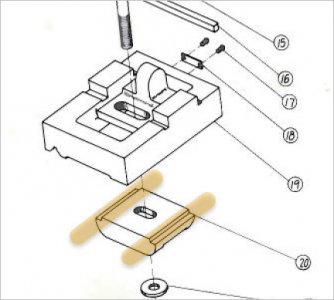- Joined
- May 4, 2015
- Messages
- 3,583
I think if it's bowed I'd make a new one and maybe case harden it for strength , or use 4140 . Or even use thicker steel and cut ledges to keep aligned. Or maybe your applying to much pressure to the tooling . If it takes that much to hold the tailstock . A little to much pressure on locking the tailstock overtime I guess.


